Fiber Optic Transceivers are wavelength-specific lasers that can convert electrical data signals into optical signals via optical fiber. It is basically a device that uses fiber optical technology in sending and receiving data. Here’s the classifications:
Based on form factors
1. XENPAK
– original 10G pluggable optics using SC connector type

2. X2
-provides 10G connectivity up to 40km on SMF and successor of XENPAK. Also used SC connectors
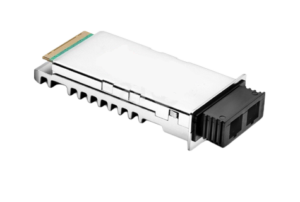
3. GBIC
-short for Gigabit Interface Converter, is a standard of transceivers. It uses SC connector supporting 850nm to 1550nm wavelength (distance of 550m to 80km)
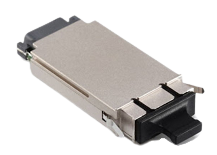
4.XFP
-first of 10G small form factor, using LC connectors
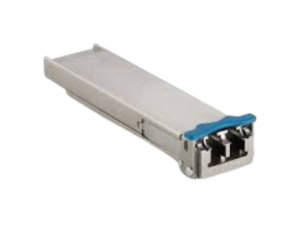
5.SFP/SFP+/SFP28
-SFP or Small Form-Factor Pluggable, smaller than GBIC (1/2 size)
-SFP+ enhanced version of SFP, same physical form factor as SFP. It supports 10G with LC connector
-SFP28 is enchanced version of SFP+, supports up to 25Gb/s
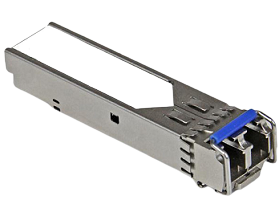
6.QSFP/QSFP+/QSFP28
-QSFP or Quad Small Form-Factor Pluggable
-QSFP+ is an evolution of QSFP, supports 4 x 10Gb/s channels
-QSF28 can support up to 100Gb/s, QSFP56 up to 200Gb/s and QSFP-DD up to 400Gb/s

7.CFP
-CFP or C Form-factor Pluggable, support 100Gb/s

8.CPAK
-Cisco’s proprietary 100G form factor.
-Popular are CPAK-100G-LR4 (SC Connector)/ CPAK-100GE-LR4 (LC Connector) uses SMF Duplex/1310 wavelenght/10km distance ; CPAK-100G-ER4L SMF Duplex/1310 wavelength/25km
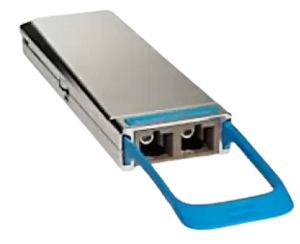
Based on Mode Type
Fiber transceivers can be classified based on what fiber cable can be used.
- Multimode
-multiple modes of light to couple into the fiber, thus have several modes of light progating at different speed that result to spreading of pulses (Modal dispersion)
-cost effective and can be used within the same datacenter due to its length limitation.
Can be categorized as:
OM1 – typically orange jacket with core size of 62.5 micrometers, supporting up to 10G at 33 meters length, most common used in 100M applications
OM2 – jacket is also orange color but core size is 50 micrometers, supporting up to 10G at 82 meters length, most common used in 1G applications
OM3 – jacket is color aqua and core size is 50 micrometers, supporting up to 40 and 100G at 100 meters, most common used for 10G applications
OM4 – jacket is color aqua and improvement of OM3, core size 50 micrometers, supporting up to 40 and 100G at 150 meters (also 10G at 550 meters) - Singlemode
– only allows a single mode of light to couple into the core, thus elimates Modal Dispersion issue
– can transmit over greater transmission distances but slightly more expensive and requires also expensive transceivers
Can be categorized as:
OS1 – indoor application, distance of 2km, lower price, attenuation of 1.0db/km, tight buffered construction and ITU-T G.652A/B/C/D standard
OS2 – outdoor application, distance of 10km, higher price, attenuation o 0.4db/km, loose tube construction and ITU-T G.652C/D standard
Based on Connector Types
- SC (Subscriber connector) – Sample form factors are X2, XENPAK, GBIC, other QSFP,CFP and CPAK
- LC (Lucent Connector) – Sample form factors are SFP, SFP+ and XFP
- MPO (Multi-fiber Push-On) – sample form factors are 40G/100G QSFP and 100G CFP
Refer to this link for more details on Fiber Optic Connector Types –> https://freenetworktutorials.com/types-of-fiber-optic-cable-connector/
Based on Wavelength
These are the 3 main wavelengths in fiber optic transmission as they have the lowest attenuation (loss of strength of signal during transmission)
Note: The longer the wavelength (higher frequency), the less attenuation, and the larger core you need
Wideband:
- 850nm – wavelength that can be operated by Multimode, sample is 1G SX or 10G SR
- 1310nm -wavelength that can be operated by both Multimode and SingleMode, sample is 1G LX or 10G LR
- 1550nm – wavelength that can be operated by SingleMode,but for greater distance, sample as those 1G ZX or 10G ZR
Two common schemes (Narrow Band)
-DWDM (Dense Wavelength Division Multiplexing), more tightly space than CWDM, and commonly used frequency to describe spacing of channels e.g. 25GHz, 50GHz, 100GHz, allowing for 160 channels over a single fiber strand
-CWDM (Coarse Wavelength Division Multiplexing) – spaced at 20nm , common in 1550nm, tyhpical used for 4 to 18 frequencies over a fiber strand,e.g 20nm apart — for 1310nm window 1270,1290,1310 to 1410, while 1550nm windows is from 1470,1490 to 1610nm.
Based on Data Transfer Rates
- 100Base – 100 Mbps (Fast Ethernet, FE, 100Mbps)
- 1000Base – 1 Gbps (1GE, 1GbE, 1Gbps, 1000Mbps)
- 10GBase – 10 Gbps (10GE, 10GbE, 10Gbps)
- 40GBase – 40 Gbps (40GE, 40GbE, 40Gbps)
- 100GBase – 100 Gbps (100GE, 100GbE, 100Gbps)
Based on Transmission Distance
- Multimode Application – for short distances or some call it SR or Short ReachSample:
1 Gbps – SX (2km)
10Gbps – SR,USR,LRM (max up to 400m for OM4)
40Gbps – SR,SR4,CSR4 (max up to 150m for OM4)
100Gbps -SR4,SR10 (max up to 150m for OM4) - Singlemode Application – for longer distances, cheaper but needs a bit more expensive equipmentSample:
1 Gbps – LX (10km), EX(40km), ZX(80km)
10Gbps – LR (10km), ER(40km), ZR(80km)
40Gbps – LR4 (10km), ER4(40km)
100Gbps – LR4 (10km), ER4(40km)Note: Transmission distance can be increase by using devices like dispersion compensators and optical amplifiers
Reading optical power for these types of transceivers in Cisco and Juniper, can be found here:
Checking TX / RX optical power for Cisco IOS, IOS-XR, NX-OS
Checking TX / RX optical power in Juniper (JunOS)
Sample Fiber Optic Transceivers you will see on the market today
100G/400G Transceivers
-100G QSFP28
-100G CFP/CFP2/CFP4
-400G QSF-DD
25G/40G Transceivers
-25G SFP28
-25G WDM SFP28
-40G QSFP+
10G Transceivers
-10G SFP+
-10G CWDM SFP+
-10G DWDM SFP+
-10G XFP/X2/XENPAK
SFP Transceivers
-100BASE SFP
-1G SFP
-1G CWDM SFP
-1G DWDM SFP
Other Types:
Direct Attach Twinax Cables
Breakout Cables
Active Optical Cables
Be First to Comment